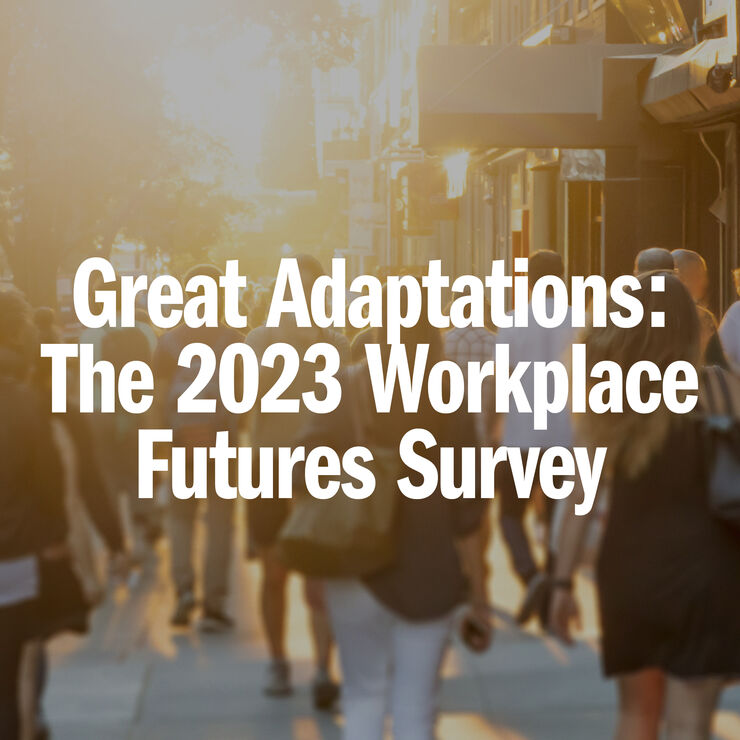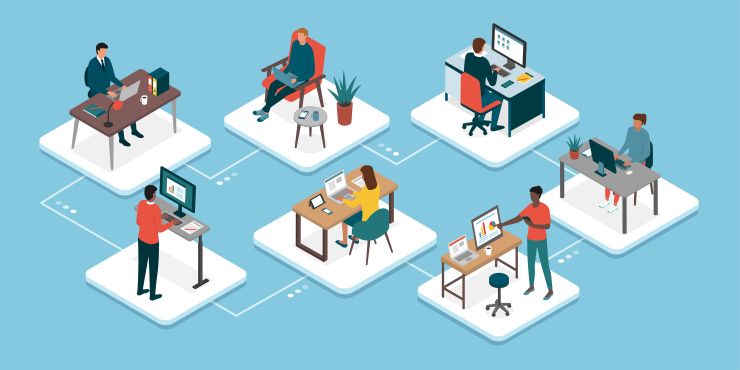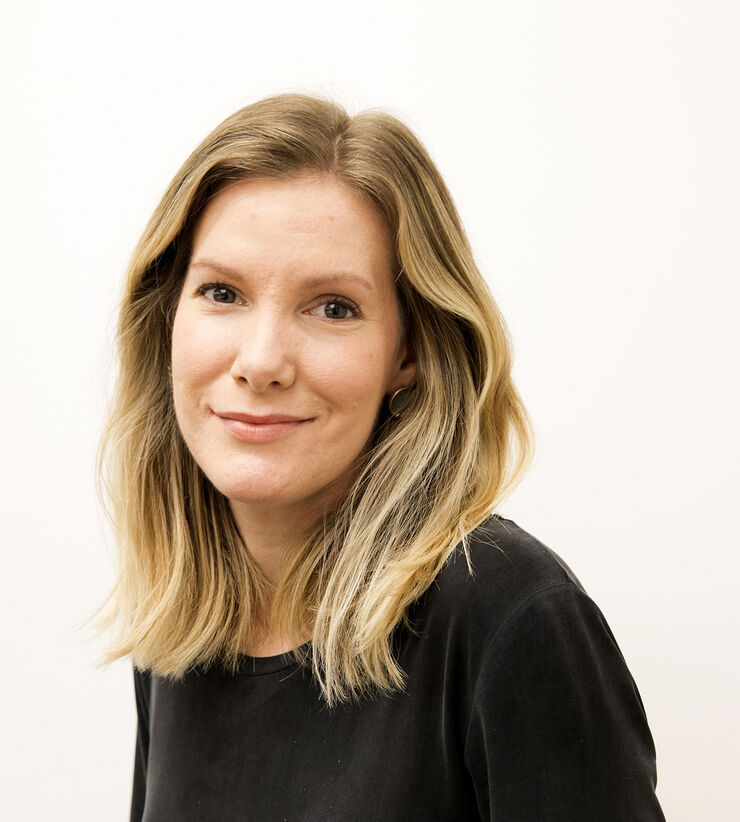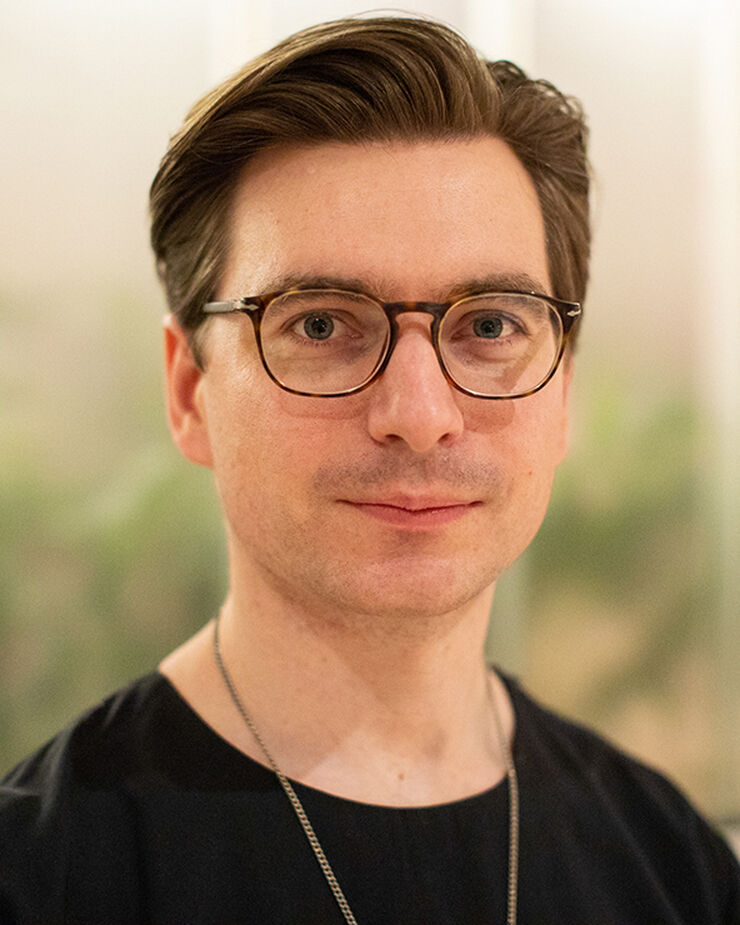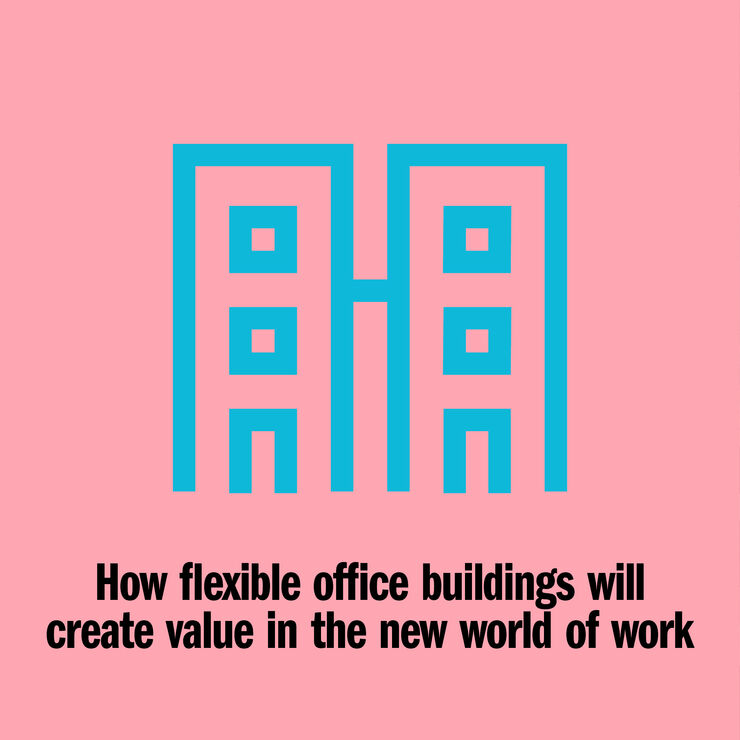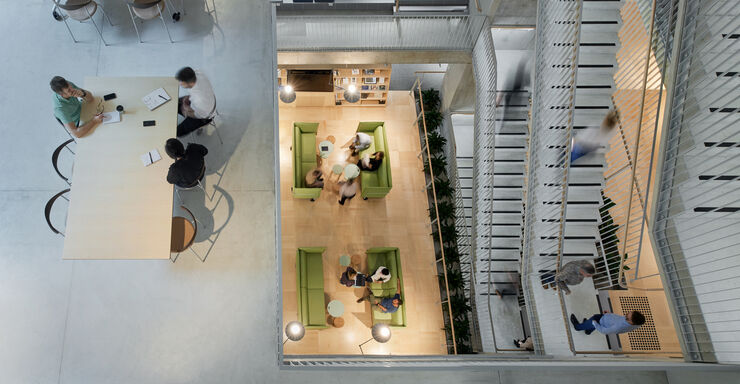Transcript
Catherine Van der Heide:
I’m interior designer Katherine Van der Heide and you are listening to Hassell Talks. As a workplace designer, I can’t remember hearing as much chat about the future of the workplace as I have over the last year or so. Everything the pandemic has thrown at us all regardless of our location, has forced innovation and meaningful conversations about how, where and when we want to go to work and what we want out of our workplaces
To help our clients and their organisations approach the changes, Hassell, who are the people behind this podcast and also the design firm I work for run an annual workplace features survey. The 2021 survey results from 2,300 office workers in both Singapore, the UK, US and Australia has confirmed many hunches and introduces surprising new findings when it comes to attracting talent. And I’m really excited to hear about some of those findings from the reports author, the senior researcher Daniel Davis, and hear from some of our clients about their situation in this episode.
So Daniel, before we jump into your findings, I wanted to read back to you something you said around this very topical question of how many days people want to come into the office. And that is, in many ways it seems a bit backwards to ask people the number of days they want to spend at home. So I’m really curious in your role as a researcher, you must know of countless recent surveys that have asked this exact same question. So why isn’t it the right question to you?
Daniel Davis:
Okay, so I think firstly just, it’s great the organisations are surveying people and getting feedback from employees. If there’s one thing that’s come out of the pandemic that’s been positive, I think it’s that organisations are listening more to their employees. But one of the issues with this question of asking people directly how many days they want to spend at home is that it doesn’t really expose many of the trade-offs that people are making in that decision. So can imagine an office where people maybe only come in one day a week? If you’re an architecture, an interior designer, that there’s going to be a different type of office than an office where people come in five days a week. When you ask people that question just kind of straight up, you’re not really exposing to them all the other kind of trade-offs that they’re making.
And so really the way that I think about it is that, I mean it’s important to be listening to their employees and what they want to be doing, but it’s also important to understand what a company’s mission is, what the culture is, how they want to do work, and how they want to organise themselves. And I think a lot of it’s about finding those trade-offs and in some ways the number of days that someone ends up spending working in a particular place is more the outcome for a model rather than the thing that should be driving what the workplace model is.
Catherine Van der Heide:
Yeah. Okay. So I know that was a question you did ask as part of the survey we ran, but it wasn’t the only one. So what’s different about this research?
Daniel Davis:
So I think probably one of the more interesting aspects of this research, at least from my perspective, is that we didn’t just ask questions that related to the architecture of the space and we didn’t just ask questions that related to the culture. So in other kind of surveys you’ll see from say HR groups and stuff that just focus on cultural, they’ll just focus on space. And in this, we were bringing those two together in a holistic survey. The other kind of aspect of it that was interesting is that we’d run the survey actually previously last year in Australia. So this year we expanded it out to 2,300 people and we also included people from Singapore, the UK and the US, which gives us the ability to both look back at what happened in Australia and compare it to what’s happening in these other places and then also compare all these other places against one another.
So the things that we really wanted to know was how the recovery was going internationally in all these different places. We’re curious about what had changed in the past six months. We wanted to know where people were wanting to work after the pandemic and we wanted to understand what was driving their preferences and those choices that they’re making. And we particularly wanted to know what was going to bring people back to office buildings after the pandemic.
Catherine Van der Heide:
And we also know, I guess, that the response to the pandemic has been incredibly varied depending on where we are in the world. And here I’m talking to you in London, you are in New York. So Daniel, how did you balance it all up against each other to get those insights?
Daniel Davis:
So we worked with a research partner to recruit all the people that participated in the survey and they’re a research partner that works with a bunch of well known brands and they’re able to pick people out of each of these countries that creates a representative sample of office workers in each region. So we had 500 people from the United States, 500 people from London, 500 people from Singapore and 800 people in Australia. And although we had more people in Australia in the survey, we actually weighted them a little bit differently, so the Australians didn’t have an outside impact on everyone else. And in total we asked around 40 questions to each participant.
Catherine Van der Heide:
So, that’s a lot of data.
Daniel Davis:
So it’s been a lot to process. But after crunching the data, we really arrived at basically five key insights and the first insight relates to the way that countries and businesses have transitioned from the lockdown and out of the pandemic. And it’s probably important to say that when we ran the survey, we ran it in April of this year. So the situation was quite different in a lot of these countries, but basically what you saw in each of those countries is that there was a really clear pattern in how they moved out of the pandemic or how they were moving out. So in countries that were deep in outbreaks, you had a lot of people working at home and then you saw people working in these hybrid situations as they exited the pandemic. And then eventually in places that had less of the pandemic occurring, you had people back in the office.
And while that sounds really obvious, when you look at a lot of what people discuss in the media, a lot of these sort of articles and reports that you’ll see, they almost assume that what’s happening in this current moment is going to be the thing that carries forward for the rest of eternity. And I think probably the most important thing to see from that data is that the situation is really fluid, that it’s changing and that people are adapting and evolving and changing the way that they’re working.
Catherine Van der Heide:
And Daniel, I’m interested, what was the second insight from the research?
Daniel Davis:
The second part of the finding was just how much things have changed in the past six months. And the answer is basically that things changed a lot. And so we had data from Australia in the survey and we had looked at what was happening in Australia six months ago and what was happening six months later when we ran the survey again. And you saw these really dramatic shifts and the number of people that were now working back in the office at that time in Australia. And of course everything’s changed once again. But I think the question for organisations there is how do you navigate a world that is changing so quickly? And I think the answer to that is that you can’t really set forward a plan and just execute that. You really have to be testing and experimenting and you can’t wait for this data to normalise, you need to be testing things over the short term so that you can develop a long term strategy.
Catherine Van der Heide:
Such an important topic for our current clients and especially clients that are in the midst of a real estate commitment.
Speaker 5:
Daniel Davis.
Cameron McIntosh:
Hi, I’m Cameron McIntosh. I’m our workplace leader for Victorian South Australia at Arup. In my role at Arup, it’s a two hatted role as a lot of people are these days and it covers both external projects for our clients, so looking after workplace projects for them and also, I guess a role to assist in our own workplaces across the world. For Arup, it really comes back to being focused around people and focused around bringing people together so that they can do their best work. There was a lot of research right at the very start of COVID and a lot of it, shall we say, was a bit speculative and probably slightly hysterical in my own view in terms of some of the solutions that people were putting out there. I guess my feeling was that if we’re still in those situations come five, 10 years time, then there’ll be a fundamental change rather than us working out how we deal with only two people in a lift at a time, for example.
So I think having research that circles back on that after a period of time is really important. I think the other thing is that we as Arup have had quite a long relationship with Hassell. Hassell wrote our own workplace guidelines back 2013 now, and the fundamental premise of those still holds true regardless of pre or post pandemic. I think it really comes back to spaces for people and maybe an acceleration of certain trends that we were seeing pre COVID rather than anything new or anything outrageous that’s going to completely change the world. I think we even see that in our own organisation where different offices and regions around the world were at different points in their journey of workplace and how they work and that’s now seeing some areas trying to play catch up, other areas like Melbourne, which was leading the way in that sense, trying to see, okay, so what’s next and how do we tweak? And it’s more about the finesse rather than the wholesale change and the impact of that change.
Catherine Van der Heide:
It’s so interesting starting projects in this moment with clients because they have their experience, their personal experience, the organization’s experience, a cultural experience that they’re all grappling with. I think organisations are very keen to hear from their people and it hasn’t always been that way. Sometimes, say in the past it could have been quite a hierarchical or top down decision-making process, but I think companies now understand that the people, their people have made the last year work for them. And I think they’re quite of the understanding that in order for that to continue as we come out of this and as people start to move perhaps to the country or to another country but actually still work for the same organisation. And it’s a lot of also movement I think in changing jobs as well around industry that for their people to remain engaged, for them to attract new people is also a really key part of this scenario.
So I think we’re talking to people more than ever, and not just people who are about to do a workplace, but people and organisations that are about to find a new building. So we’re now being engaged earlier, I think, than we ever have been as well because we’re becoming a key part, or the strategy behind a workplace is becoming a key part of a real estate decision. So that’s what I find really fascinating too, that you know can have this discussion kind of five years out from a workplace eventuating. So I’m really interested also in your third insight, which has to do with the topic of how often employees come into the office.
Daniel Davis:
Yeah, so we’ve heard a lot in these news reports that people want to spend two or three days a week working at home and we were really curious whether or not that was accurate and where that kind of information came from. And so when you dig into that statistic that you see around where people say they want to spend two or three days working at home, most of the time that people are reporting on the statistics, it’s because they run a survey that asks people directly, how many days do you want to work at home? There’s not necessarily a lot of nuance in that question. As we sort of discussed earlier, there’s differences in a workplace where you come in one day a week versus one that you come in five days a week. And so we were really interested in exploring that further. And one of the ways that we did that is in this survey we asked a question that’s called a preference test.
And so in a preference test you’re shown two different scenarios. So one scenario might be working at home five days a week, another scenario might be coming into the office part time, but also not having an assigned desk when you come into the office. We show those two scenarios and we ask people to pick which one they most prefer, and the advantage of that is that you get a lot of nuance in that. So rather than just asking people how many days they want to come in, they’re seeing the sort of trade off that they’re making and you show people one set of trade-offs and then you can show them the next set of trade-offs and the next set of trade-offs. And doing that, you can show them a whole bunch of different workplace scenarios and get them to really begin to articulate which ones are the best.
And what we saw in that is that when you ran the preference test, and so we ran the preference test and we ran it alongside the question that asked people how many days they wanted to spend working at home. And when you ran those two things together, when we asked people the question, how many days you want to work at home, most people said that they actually wanted to work at home two or three days a week like you saw in the other research. When you gave people this sort of nuance of that through the preference test, you saw this kind of shift where a lot more people were more willing to work in the office. Far fewer people were willing to work at home when given that kind of context about what it would mean for their everyday work life to make those particular decisions.
Catherine Van der Heide:
And so what were the options you were giving people as part of the preference test?
Daniel Davis:
In total, we explored people’s preferences for six different workplace models and these workplace models, they came out of prior research that was looking at what companies were likely to adopt after their pandemic. And so these are six models that most companies are considering and they ranged the gamut. So we had on the most extreme end of fully virtual office where people never came in to the office, they only worked at home. We had two different modes of hybrid working, a clubhouse where people came in to do social work and worked at home to do more focused work, what we’re calling turbocharged ABW, where people had a flexibility to choose whether or not to come into the office or to work at home. But when they came into the office, they didn’t have an assigned seat, they sat anywhere they liked. And then we had a bunch of scenarios that were more focused on coming into the office five days a week.
So we had hub and spoke, which is a model where the central office is taken and split into smaller offices closer to where people live and activity based working and a more kind of central static model where people had an assigned seat. And what we saw is that people really tended to favour the flexible model. So the clubhouse and turbocharged activity based working model, they both did really well and that also there were these demographic differences in what people prefer. So young people tended to prefer the turbocharged activity based model and people that were older tended to prefer more static and central models. And there are also these differences in how people got to work. So people that took public transportation to work tended to prefer the flexible models and people that drove to work tended to prefer models that saw them go back in five days a week.
Letitia Hope:
My name is Letitia Hope and I’m the workplace partnership Specialist for ISPT. And ISPT is an industry superannuation trust and we invest in property. My role is purely focused on understanding trends, workplaces of the future, third spaces and precincts, and ensuring the experience is something that’s really going to energise and elevate people when they’re there. We’ve all changed now and COVID has changed what we want and need from workplace and that means we are going to have to deliver different things. What we’ve got to think about then is how do we tailor a workplace for every individual? And that is a really tricky thing to get right.
From the findings, one of the main things that stood out for me was this turbocharged ABW. So with the ABW in the past, what we’ve often seen is it starts off as this great aspiration, but as organisations grow, all the different options of spaces get taken up. So it’s really starting to think, although we’re seeing people consider their space in a very different way at the moment in this disrupted environment, really being able to understand how do we make that happen and ensure that turbocharged ABW or this clubhouse style is actually designed and future-proofed to enable that it meets their needs and continues to offer the variety that people are really craving at the moment.
So much that we are focused on in creating a community experience is beyond what there might be from a collab space, but it’s actually more about what’s going on, what is the thread that runs through a workplace, third spaces our precincts that actually join up and get people to see that they’re part of something bigger and that people are welcome. We’ll be able to see many more underrepresented parts of the community in the workforce in different ways than we’ve ever seen.
Daniel Davis:
What’s interesting is that when you look at where each of the countries were at the time the survey is deployed, it really doesn’t impact what people want to do after the pandemic. Instead, the main factor here appears to be demographic, so these countries that were really locked down when we ran the survey, they didn’t have high numbers of people that wanted to work at home. The numbers were actually pretty consistent across different geographic regions and the thing that really differentiated it was these demographic factors. So younger people preferring flexible models and people that commuted using public transportation, preferring flexible models as well.
Catherine Van der Heide:
Now what does this mean for organisations?
Daniel Davis:
I think for organisations it really means that it’s possible to tune your workplace model to particular goals. So if you think about this, if you’re trying to attract young talent, perhaps a flexible model is best, if you’re trying to retain experienced staff, perhaps offering them a more sort of classic office might work best. But whatever the case, and this goes back to that earlier point, you really need to understand the objectives and what you’re trying to get out of the workplace in order to be able to tune it to your company’s goals.
Catherine Van der Heide:
I’m really interested now Daniel, so what was the final finding?
Daniel Davis:
So the final finding, this was actually one of my favourite ones. We gave everyone that participated in the survey a list of workplace features that we thought they might want to see in a workplace in the future. And we asked them to pick the ones that they’d most like to see in their office when they returned back to the office. So this was a big list, there was about 20 different things that we’d brainstormed and came up with as possible perks that might draw people back to the office. And I think for me, probably one of the most surprising factors of this research was that you had all these really high end, nice to have amenities that we’d imagined people might want to have such as free childcare or being able to bring their dog to work. And these things actually didn’t really do that well.
The things that did really well in the survey were actually free food and a shorter commute, which I mean that’s understandable. But then right behind those two things was actually just a real bunch of just practical considerations. So things like having more space to focus, more space to collaborate better meeting facilities. Just getting the basics right was the thing that people most wanted to see in their workplace. And like we saw in other parts of the survey there were differences in terms of gender, there were differences in terms of age and there were differences in terms of region. But the thing that I keep on returning back to is just, when given this list of just wild fanciful things that could be in a building, the thing that people really wanted was just the basics to be done well.
Catherine Van der Heide:
Yeah, it’s amazing, isn’t it? It’s amazing how simple it can be. So Daniel, as we’ve talked about, we’re in a really fluid situation here, so I’m curious if there’s any question you would now add to the research if you could.
Daniel Davis:
Yeah, so we have to cut a bunch of questions out of the survey just because people get really tired if they answer too many questions. Some of the questions that would be fun to include if we had the space for them. I think digging down a little bit more on the amenities that people wanted to see, we had this one question that focused on the amenities, but I think we could have done a lot more there. And I think also understanding more about why people were choosing particular workplace strategies. We had some indication from the survey, but there’s more going on there that I think would be worth unpacking and understanding.
Catherine Van der Heide:
So it’s really fair to say that the return to work is not just about where we are going, but actually how we’re getting there. The organisations really need to consider which workplace model fits the goals of what they want their business really to be in the future. We know actually from this survey, they’re gathering data and using it to inform your workplace strategy is really going to be central to how we get this right. And as this survey shows, it’s around the importance of really just getting the basics right, keeping it simple. So my take on today’s discussion is that if we can really listen to those who we work with, our organization’s mission, it’s culture and the experience of these things can become really tangible and meaningful to both the current and future people who work there. So I really want to thank Daniel for his research and taking the time today to be part of has Hassell Talks. And thank you all for listening. Please subscribe, rate and review us wherever you’ve tuned into this podcast.

